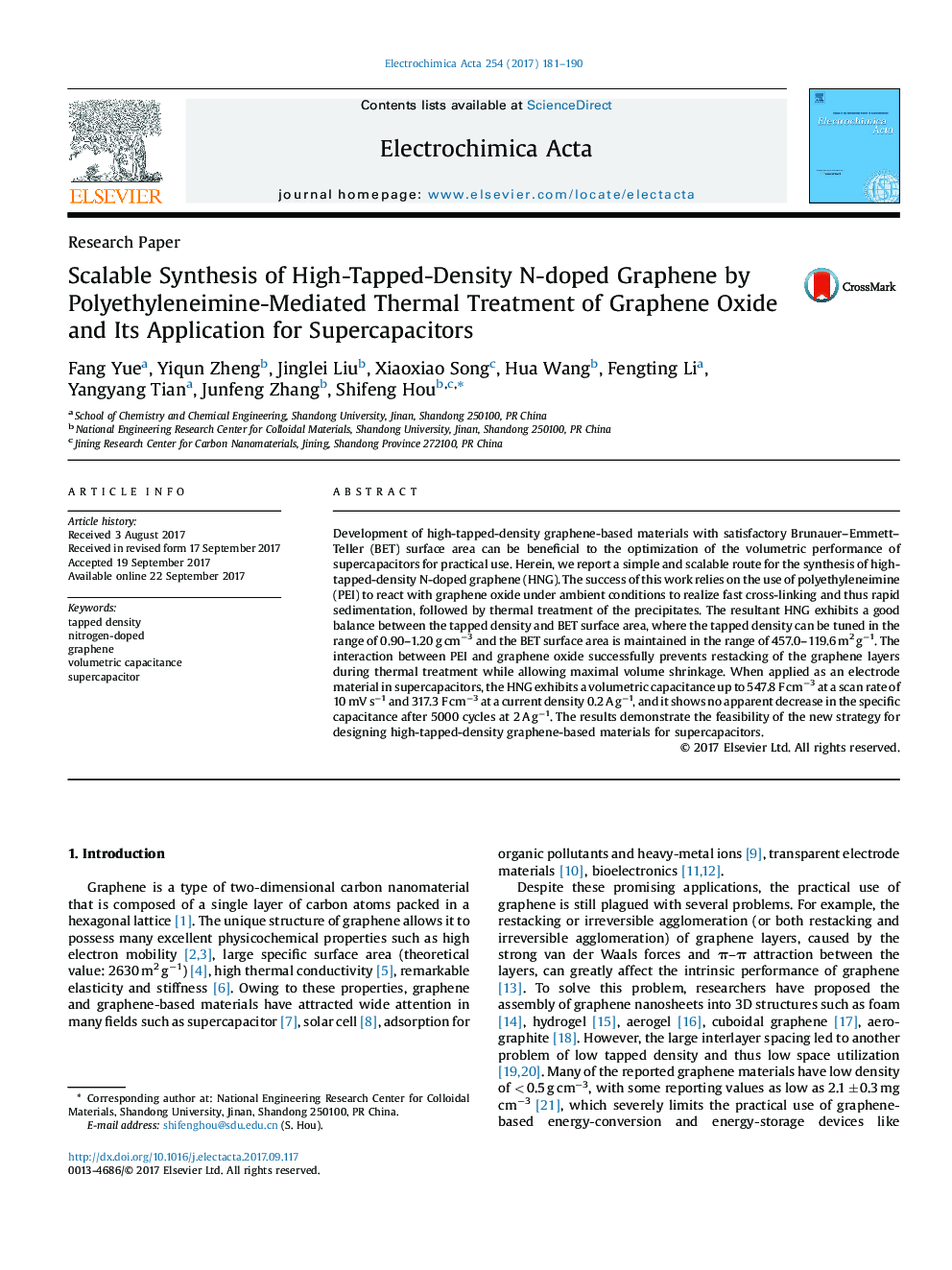| Article ID | Journal | Published Year | Pages | File Type |
|---|---|---|---|---|
| 6469809 | Electrochimica Acta | 2017 | 10 Pages |
â¢High-tapped-density N-doped graphene was prepared via a simple and scalable method.â¢Polyethyleneimine prevents restacking of layers and allows maximal volume shrinkage.â¢The materials exhibit good balance between tapped density and BET surface area.â¢The materials show high volumetric capacitance up to 547.8 F cmâ3.
Development of high-tapped-density graphene-based materials with satisfactory Brunauer-Emmett-Teller (BET) surface area can be beneficial to the optimization of the volumetric performance of supercapacitors for practical use. Herein, we report a simple and scalable route for the synthesis of high-tapped-density N-doped graphene (HNG). The success of this work relies on the use of polyethyleneimine (PEI) to react with graphene oxide under ambient conditions to realize fast cross-linking and thus rapid sedimentation, followed by thermal treatment of the precipitates. The resultant HNG exhibits a good balance between the tapped density and BET surface area, where the tapped density can be tuned in the range of 0.90-1.20 g cmâ3 and the BET surface area is maintained in the range of 457.0-119.6 m2 gâ1. The interaction between PEI and graphene oxide successfully prevents restacking of the graphene layers during thermal treatment while allowing maximal volume shrinkage. When applied as an electrode material in supercapacitors, the HNG exhibits a volumetric capacitance up to 547.8 F cmâ3 at a scan rate of 10 mV sâ1 and 317.3 F cmâ3 at a current density 0.2 A gâ1, and it shows no apparent decrease in the specific capacitance after 5000 cycles at 2 A gâ1. The results demonstrate the feasibility of the new strategy for designing high-tapped-density graphene-based materials for supercapacitors.
